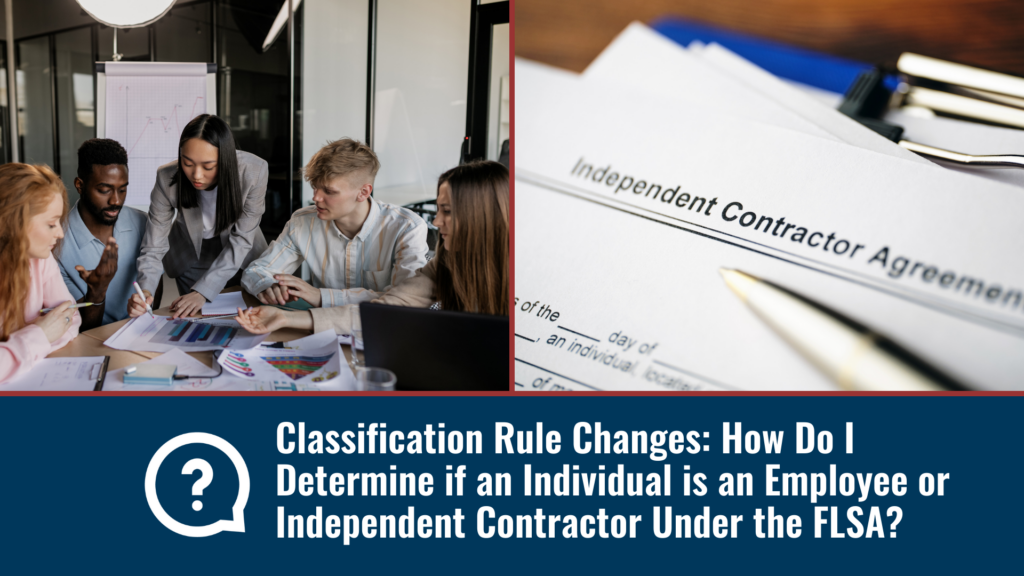Q: The Department of Labor (DOL) recently changed the rules for classification of when an individual is an employee versus an independent contractor. What has changed in the rule and how do I now determine if an individual is an employee or independent contractor?
A: On January 10th of 2024 the U.S. Department of Labor published a final rule, to be effective March 11, 2024, revising the Department’s guidance on how to analyze who is an employee or independent contractor under the Fair Labor Standards Act (FLSA). This final rule rescinds the prior ruling and replaces it with an analysis for determining employee or independent contractor status that is more consistent with the FLSA as interpreted by longstanding judicial precedent.
The misclassification of an employee as an independent contractor may deny workers minimum wages, overtime pay, benefits, and worker’s compensation. The final rule aims to reduce the risk of employees being misclassified while providing a consistent approach for business.
This final rule has several similarities to the 2021 Independent Contractor Rule. For example, both rules advise that independent contractors are workers who typically are (1) in business for themselves and (2) recognize that covered employees are workers dependent on the employer for work. Both rules identify economic dependence as the “ultimate inquiry” of the analysis, provide a non-exhaustive list of factors to assess economic dependence, and caution that no single factor is determinative. These two rules also clarify that economic dependence does not focus on the amount of income the worker earns or whether the worker has other sources of income.
The final rule differs from the current rule in several ways including no single factor carries more weight. The new rule considers six factors instead of five, provides for analysis of the control factor, and omits a provision from the 2021 Independent Contractor Rule, that minimized the relevance of an employer’s reserved but unexercised rights to control a worker. The new rule adopts The Six factors of the Economic Reality Test for the analysis, with no factor having predetermined weight. The six factors to analyze employee or independent contractor status under the new rule are as follows:
(1) opportunity for profit or loss depending on managerial skill.
(2) investments by the worker and the potential employer.
(3) degree of permanence of the work relationship.
(4) nature and degree of control.
(5) extent to which the work performed is an integral part of the potential employer’s business.
(6) skill and initiative.
Employers will want to review the final rules and reviews and resources listed below.
Employer Resources







